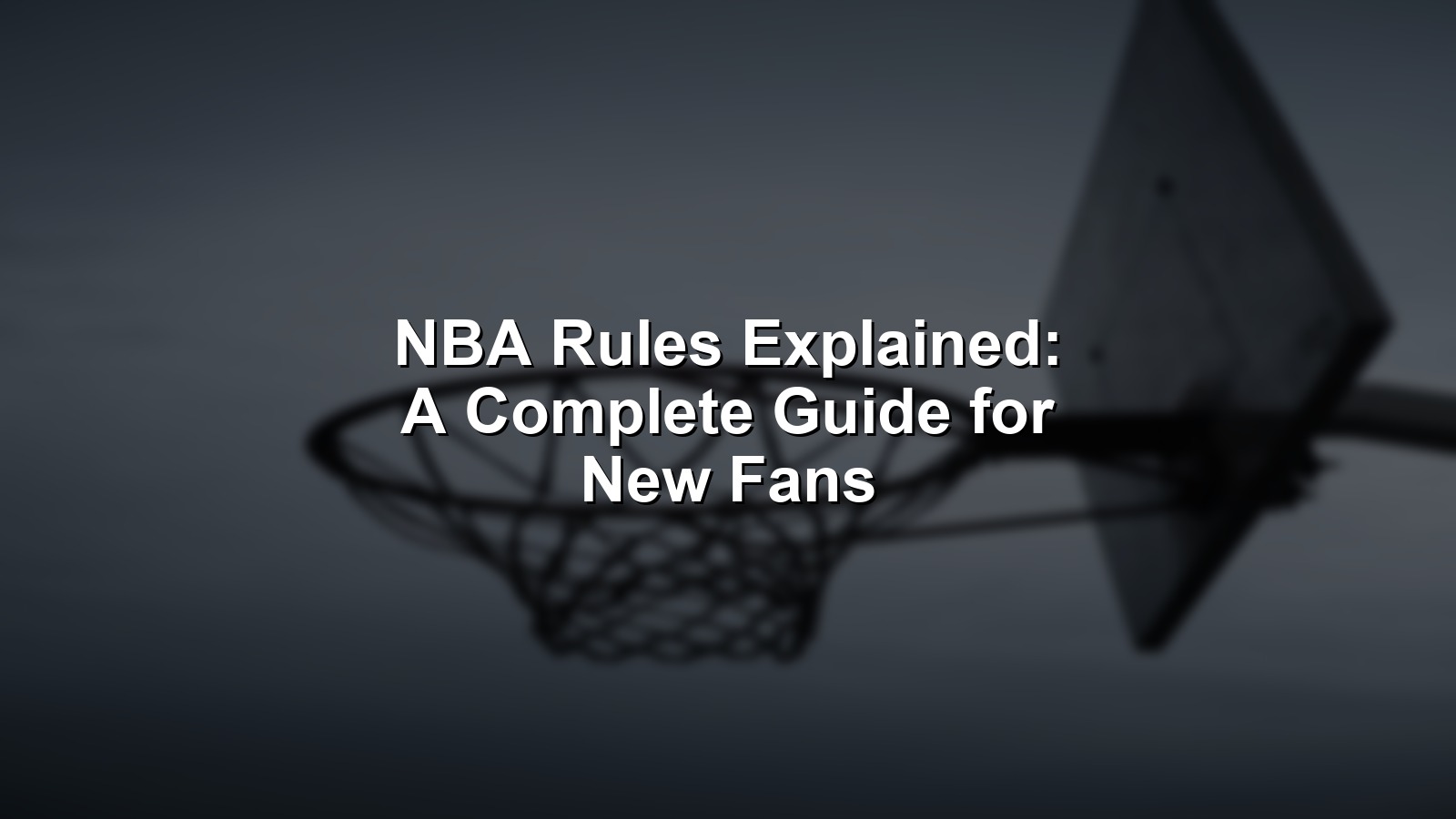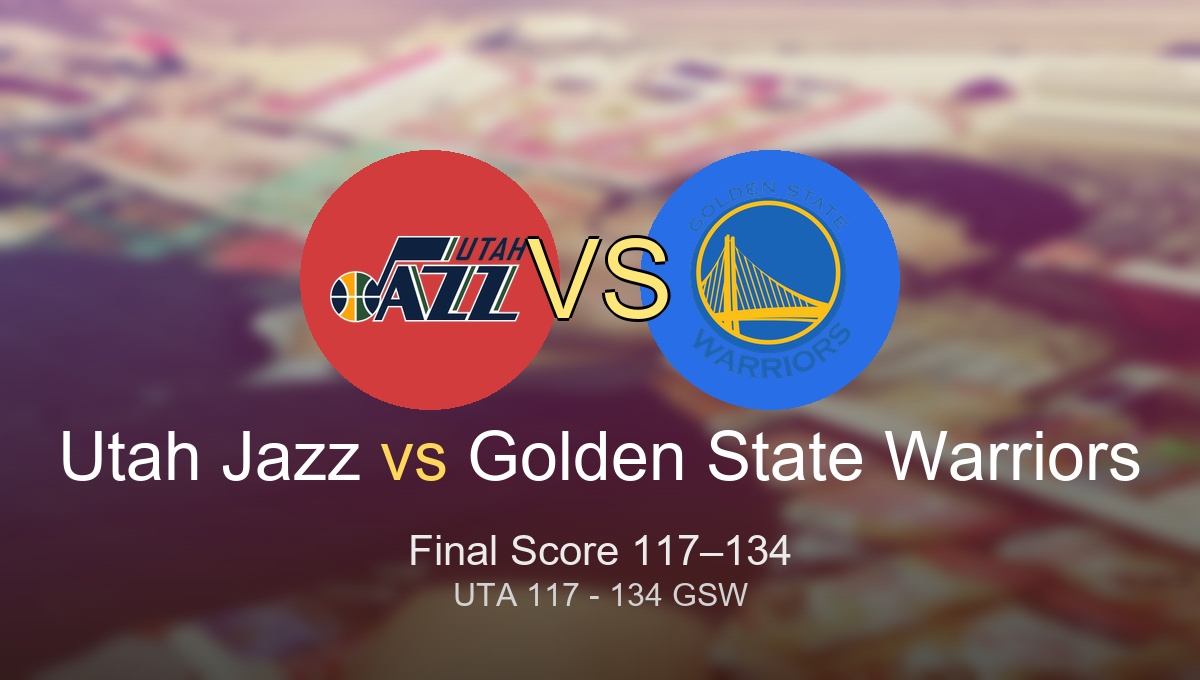
Walk into an NBA arena, or even just onto your couch on game night, and you’ll experience a game that moves at warp speed—a rulebook in motion, full of drama, strategy, and those moments where the smallest technicality changes everything. For new fans, the phrase “NBA rules explained” isn’t just about stopping travel calls or knowing a legal pick. It’s a key to understanding why some games become legendary, how superstars shape their careers, and why every whistle can echo far beyond the court.
NBA rules have shaped championships, defined careers, and sometimes shifted dynasties. From the hard-nosed 90s battles to today’s free-flowing offenses, knowing the fundamentals doesn’t just deepen your experience—it brings you closer to the game’s evolving soul.
So, whether you’re prepping for your first NBA discussion or simply want to appreciate the buzzer-beaters with well-earned expertise, let’s break down the 10 most essential NBA rules. Each comes with a moment—a story—that shows why these rules matter, and how they became the bedrock of pro basketball.
Context: Why This Matters
Every NBA debate eventually finds its way back to rules. Are championships made on talent, or just by who plays the system best? Look at any barbershop, sports bar, or X thread, and the arguments are fierce: is it all about “rings,” longevity, or pure impact? How much does one referee’s decision or the details of the rulebook decide who gets remembered and who fades away?
Rules aren’t just there to keep order—they sculpt legacies. The best even learn how to weaponize them, stretching limits while never quite breaking. For the fan, understanding the NBA rules explained means seeing the invisible chess game inside the box score. It’s the difference between being a spectator and becoming a lifelong fan.
Methodology
How did we rank these rules? The NBA rulebook is deep, but not all rules have shaped the league equally. We focused on:
- Historical impact: Moments that shifted the league or a championship.
- Frequency: Rules that define the flow and outcome of most games.
- Player and fan influence: Which rules are debated, bent, or defined by icons?
- Relevance today: The staying power and evolution in the modern game.
We leaned on a mix of sources:
– NBA.com Official Rulebook
– Basketball-Reference: NBA Stats and History
– Naismith Memorial Basketball Hall of Fame
Approximate weighting:
– Moment/legacy impact: 40%
– Longevity/frequency: 30%
– Influence on outcomes and player strategy: 30%
Moments That Changed Everything: 10 Essential NBA Rules Explained
1. The 24-Second Shot Clock (Pace & Pressure)
It was Syracuse, 1954. The Nationals and Celtics had just played a game so slow, with so much stalling, that even diehards yawned. The next season, the NBA introduced the 24-second shot clock. Suddenly, the game was electric. Each possession was a race.
The shot clock did more than speed up basketball; it forced stars to shine under pressure, defined miracle comebacks, and made the NBA a must-watch sport. Without it, there’s no “7 Seconds or Less” Suns, no dramatic endgame blitzes, and nowhere for legends to hide when the clock is ticking.
“Pressure makes diamonds—or turnovers,” Jason Kidd once smiled.
Key facts
– Introduced: 1954–55
– Each team must shoot within 24 seconds
– Sparked NBA’s fast-paced style
Authoritative sources: NBA.com Rule 7
🧵 On X
https://x.com/search?q=24%20second%20shot%20clock%20nba&src=typed_query
2. The Three-Point Line (Game Changer)
June 4, 1979. Chris Ford of the Celtics launches what seems, in the moment, a wild heave. It’s the NBA’s first-ever three-pointer. Decades later, Steph Curry drills nine in a playoff game, and the league is forever changed.
Adding the three-point line did more than add three-point contests—it rewrote spacing, redefined what greatness looks like, and let underdogs claw back from any deficit. In today’s NBA, it’s not just a rule. It’s a revolution.
“Nobody’s too far behind anymore,” Steph Curry has quipped.
Key facts
– NBA adopted: 1979–80
– 22 feet in the corners, 23’9” up top
– Basis for modern NBA “pace and space”
Authoritative sources: Basketball-Reference: 3-Point Era
🧵 On X
https://x.com/search?q=three%20point%20line%20NBA&src=typed_query
3. The Personal Foul Limit (Six Strikes)
Game 7, 1998 Finals. Scottie Pippen racks up five fouls, plays on the edge the rest of the night. Six, and it’s over—season, dynasty, history. The personal foul limit isn’t flashy, but it’s why stars and role players alike sweat every whistle.
The rule—six fouls, and you’re done—means stars must balance aggression and caution, and sometimes championships are won or lost on the bench. Compared to soccer’s gentler booking, the NBA’s penalty is merciless but unmistakable.
“Fouls don’t rest in the Finals,” Pippen joked to a reporter postgame.
Key facts
– Six personal fouls = disqualification
– Strategic limit on physical play
– Impacts minutes, matchups, championship rotations
Authoritative sources: NBA.com Rule 3
🧵 On X
https://x.com/search?q=NBA%20foul%20limit&src=typed_query
4. The Traveling Violation (The Fine Print)
It’s Game 6, 2019 Finals. Kawhi Leonard spins, steps, drills the shot—but did he move his pivot foot? Traveling calls, or their non-calls, have killed comebacks and sparked social media uproars.
Fans debate what’s legal every season. The NBA’s traveling rule is strict on paper but often fuzzy in practice. Modern footwork, eurosteps, and gather steps mean the discussion never ends—which is why it cracks the top 5.
“If you don’t know the steps, you’re dancing out of bounds,” goes an old coaching quip.
Key facts
– Limits steps with the ball—2 steps after the gather
– Always controversial; often subjective
– Affects guards, bigs, and clutch moments alike
Authoritative sources: NBA.com Rule 10
🧵 On X
https://x.com/search?q=traveling%20violation%20nba&src=typed_query
5. The Restricted Area (No-Charge Zone)
LeBron barrels to the hoop in Game 1, 2018 Finals. Kevin Love steps in—too late, too deep. The ref signals the arc: defensive foul. The restricted area has bailed out stars and frustrated fans since it was added, making block/charge debates into a science.
This barely visible arc transformed defensive strategy, made highlight-reel dunks safer, and generated endless late-game controversy. In a league full of tough calls, this one draws the sharpest lines.
“If you’re standing there, you’re just a cone,” a veteran big once grumbled.
Key facts
– Semi-circle four feet from the rim
– No charges called inside the arc
– Reduces collisions, alters defense
Authoritative sources: NBA.com Glossary – Restricted-Area
🧵 On X
https://x.com/search?q=restricted%20area%20nba&src=typed_query
6. The Backcourt Violation (The Invisible Wall)
Pressure mounts. Chris Paul gets trapped near halfcourt in a playoff slugfest. Eight seconds tick down—violation. The backcourt rule keeps offenses on the attack and prevents the old-school stall-ball of eras past.
Without it, teams would stall and slow the game; with it, every possession is a tactical sprint. Sometimes this rule barely gets noticed—until it decides a season.
“Time flies at halfcourt,” says Paul.
Key facts
– 8 seconds to advance ball over half court
– No returning to backcourt with possession
– Enforces pace, creates turnovers
Authoritative sources: NBA.com Rule 8
🧵 On X
https://x.com/search?q=backcourt%20violation%20nba&src=typed_query
7. Illegal Defense & Defensive 3 Seconds (Zone Busters)
It’s 2002. Shaq stands camped in the paint, gobbling up easy buckets. The NBA cracks down: illegal defense and defensive three seconds. Suddenly, the Lakers’ dynasty gets a new puzzle to solve.
This rule forced bigs to move, opened spacing, and let teams deploy zones—reshaping Xs and Os for the modern pace-and-space era. Few rules made such an immediate, tactical shift.
“Structure makes it a chess game,” Jeff Van Gundy once said.
Key facts
– No “camping” in the paint for 3+ seconds (without actively guarding)
– Restored spacing, helped offenses thrive
– Phased out in 2001 for zones, but 3-second rule stays
Authoritative sources: NBA.com Rule 4
🧵 On X
https://x.com/search?q=defensive%20three%20seconds%20nba&src=typed_query
8. Goaltending & Basket Interference (Above the Rim)
May 10, 1970. Willis Reed rises to block, fingertips brushing the ball at the rim—basket counts or not? The rule is clear: touch it once it’s on the way down, and it’s goaltending.
Goaltending and basket interference protect high-wire acts and ensure points are earned. The rule drew the line between superstars swatting everything and an elegant, fair contest.
“It’s respecting gravity,” one assistant coach grinned.
Key facts
– Illegal to touch ball on its way down or after it hits the rim
– Protects shooters, defines aerial battles
– In effect since 1940s
Authoritative sources: Basketball-Reference Glossary
🧵 On X
https://x.com/search?q=goaltending%20nba&src=typed_query
9. The Instant Replay Challenge (Modern Justice)
July 2020, NBA Bubble. Kyle Lowry’s charge gets reviewed. In seconds, the refs overturn the original call—game changed, legacy spared, fans divided. Instant replay is the NBA’s most recent rule power-up, adding fairness and drama in equal measure.
It balances justice with pace, occasionally slowing the game, but always raising the stakes. No player wants a legacy defined by a blown call. This rule (and the strategic Coach’s Challenge) rewrote the endgame for modern NBA drama.
“Every call is a second chance now,” as one coach said.
Key facts
– Introduced 2002, expanded since
– Coaches get one challenge per game
– Key for buzzer-beaters, blocks, and clutch fouls
Authoritative sources: NBA.com Rule Updates
🧵 On X
https://x.com/search?q=nba%20instant%20replay&src=typed_query
10. The Five-Second Rule (Inbounds and Closely Guarded)
It’s Game 4, 2013 Finals. Ray Allen sets up in the corner, the Heat scramble on an inbounds play, and every second counts. The five-second rules—on inbounding, posting up, and guarded situations—demand split-second decision-making under pressure.
These clocks aren’t as famous as the shot clock, but they create chaos and wild endings every postseason. They’re the silent heartbeats of late-game tension.
“You feel every tick in your hands,” Ray Allen said after that fateful game.
Key facts
– 5 seconds to inbound the ball
– 5 seconds to make a move (closely-guarded)
– Regulates flow, prevents delays
Authoritative sources: NBA.com: Rule 8 Clarification
🧵 On X
https://x.com/search?q=five%20second%20rule%20nba&src=typed_query
Final Thoughts: The Debate Keeps Evolving
Rules are where history meets the moment. They’re not carved in stone but shaped by every dunk, every tweet, every timeout in a Game 7. The NBA rules explained above don’t just decide outcomes—they build dynasties, topple legends, and keep the league evolving.
New trends—like positionless lineups, expanded replays, or even a four-point line—could shake up everything. Tomorrow’s fans and players will argue fresh controversies, but it’s always the rules that set the boundaries of greatness.
Stay tuned, stay curious, and know that mastering the rules is how every fan, and every future legend, truly falls in love with the NBA.



